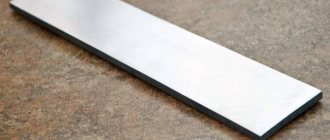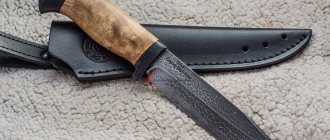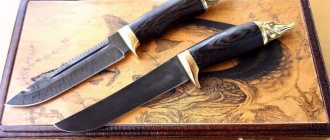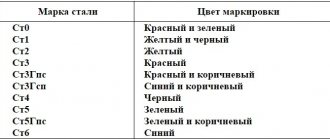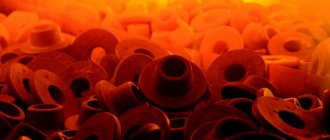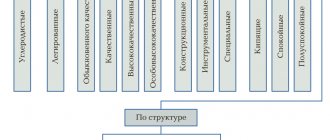home >
Damascus steel knives: pros and cons, characteristics, reviews.
Damascus steel (or simply Damascus) is one of the most controversial steels for which we have prepared a review. On the one hand, there are very few people who have never heard of it, on the other hand, few people know well what it is.
The hallmark of this brand of steel is the pattern on the surface, which is achieved due to the uneven distribution of carbon due to the heterogeneity of the material, which is specially emphasized by etching the surface with acids to give the blade a beautiful texture.
Perhaps this all does not sound completely clear, but in this article we will largely consider the characteristics and pros and cons of Damascus blades, and not the production technology. For those who are interested in the process, we recommend reading this material.
What kind of steel is this
Damascus steel is a set of several hundred alternating layers of hard and soft steel. During the forging process, they are stretched, twisted and reforged many times.
The result is a material with a characteristic linear pattern, which is ideal for making knives.
The history of the creation of the material goes back to the distant past. At that time, blades made from it were considered one of the best of their kind and were very expensive. There are many interpretations of the origin of its name. Among them, the most plausible are:
- according to one version, the name comes from the city of Damascus, where it was first found by archaeologists;
- according to another, it was first made by the blacksmith Damascus, in whose honor it received its name;
- The word "Damascus" means "water" in Arabic. In the manuscripts of that time it was described as a blade, the surface of which repeats the pattern of the water surface.
Damascus and damask steel: history of origin and distribution across the planet
Damascus knives have been used for hunting since ancient times. They were used for cutting game, skinning dead animals, and in everyday life as a kitchen tool.
Such weapons were considered elite. It was valued for the following qualities:
- durability;
- excellent cutting qualities;
- the beauty of the material and patterns;
- strength, but at the same time flexibility of the blade.
The first mention in history of Damascus steel is associated with the time of Alexander the Great’s campaign in India. Then he clashed in battle with the army of the local king Porus. He was wearing a protective shell made of this alloy, on which Greek swords did not leave a scratch. The swords of Indian warriors were made from the same material.
During the Crusades, European warriors were amazed by the sharpness of Arab sabers made of Damascus steel. The crusading knights happily bought such weapons and brought them home as trophies.
Chemical composition
Due to the manufacturing characteristics, it is not homogeneous. The composition includes both stainless steel grades with a high chromium content and low-alloy ones.
The norms and quantitative content of alloying components of Damascus steel are not regulated by any domestic or foreign standard. It is produced differently in each workshop, so the content of chromium and other metals in each blade is different. As a rule, the quantitative carbon content in it does not exceed 2%.
The amount of other alloying components depends on the set of components from which it was made.
For example, for manufacturing, blacksmiths can use the set of steels presented in the table.
| Name | Alloying component | Mass fraction in metal, % | Purpose |
| X12MF | WITH | 1,45 – 1,65 | Carbon gives the alloy hardness and increases wear resistance. |
| Cr | 11,0 – 12,5 | Increases the metal's resistance to corrosion and improves its wear resistance. | |
| V | 0,4 – 0,6 | The use of vanadium improves hardness and extends its service life. | |
| Ni | 0,15 – 0,3 | Alloying the metal with nickel increased its strength and corrosion resistance. | |
| 40Х13 | C | 0,36 – 0,45 | Gives the metal hardness and makes it more resistant to wear. |
| Cr | 11,0 – 12,5 | Chromium prevents local corrosion of the alloy. |
What's good: pros and cons
Damascus steel, like any other metal, has its advantages and disadvantages. For greater clarity, they have all been collected in a single table presented below.
| Advantages | Flaws |
| Durability . Thanks to the use of high-alloy steel grades, the blades have high strength indicators and hold the factory sharpening for a long time. | Poor corrosion resistance . Since there are practically no individual alloying elements in its composition, it has poor resistance to corrosion. |
| Flexibility . The use of low-carbon steels made it possible to produce blades with exceptional flexibility. | High price . The complex manufacturing and hardening procedure, as well as the presence of several types of metal in the composition, increase the cost of the finished blade. |
| Long service life . The optimal combination of metals with different characteristics made it possible to increase the service life of blades. | |
| Wear resistance . The use of high-alloy metals and optimal hardening made it possible to increase the wear resistance of blades. | |
| Aesthetic appearance. Features of the manufacturing process give the blade a special texture, similar to the pattern on the surface of water. |
We recommend reading an interesting article about the 12 best steels for making a knife today.
Analogs
The only grade of steel that has similar characteristics to Damascus is damask steel. It has exceptional strength and toughness. Damask steel blades are resistant to impacts, bends and hold the factory sharpening for a long time.
Their hardness reaches 64 units on the Rockwell scale.
Damask steel blade is an alloy of iron and carbon with a low content of alloying elements. A special technology of melting and hardening, combined with a high-tech forging process, gives it a dark, almost black color. In addition, it has a fibrous pattern, which gives it a similarity to Damascus steel products.
Interesting Facts
Information about the superiority of ancient Damascus steel over other types appeared in romantic literature and the media. However, scientists have not proven this fact. The same applies to the fictitious fact about prevalence among peoples. Archaeologists have not yet discovered a Damascus blade in Western Europe dating earlier than the 15th century.
Armor, spathas or gladiuses forged from Damascus have also not been found in Rome. Although there is a myth that the material was widely popular and was worth its weight in gold.
Damascus blades were also not used in the Crusades. According to historical documents, Damascus was first mentioned in the 13th century. The information that appeared in the 19th and 20th centuries about the ability of Damascus swords to cut weapons and plate armor made of other types of steel is not true. This has been confirmed experimentally. Steel with 55-58 HRC cannot be damaged by a weapon of similar hardness.
Damascus was endowed with unnatural properties in various sources. However, metallurgical research and attempts to recreate the manufacturing technology of Damascus steel proved that the material did not have characteristics that defied the laws of physics.
The best manufacturers
Despite the difficulty of manufacturing and hardening, Damascus steel blades are made all over the world. Each manufacturer uses a certain set of materials for this, mixing them in a certain proportion. Based on user reviews and expert opinions, the best domestic knife manufacturers are the following companies:
- Vorsma;
- Chrysostom;
- Kizlyar Supreme.
There are also many Damascus steel knives on the world market. The following companies produce the highest quality:
- Boker;
- Hezhen;
- Sunnecko.
Types of patterns
Before listing the different types of Damascus, it is worth making a short note. In order to produce stainless Damascus, it is necessary to assemble a package of alloy steel with the correct additives. It is welded in a vacuum.
This steel is then forged and the heating cycle is repeated. Modern technologies can handle such a process, despite the complexity of the process. Sometimes you can find kitchen products with patterned stainless steel linings.
Wild Damascus
It got its name because of the disordered pattern. It is quite simple to manufacture and is considered the most common type. A package is made from several types of steel and welded into a single block. It is repeatedly bent and forged.
The layers of metal mix randomly. The surface of the finished product looks uneven. This method goes back hundreds of years. Due to the uniqueness of the pattern, it is highly popular among collectors.
Wild Damascus.
Stamped
This is one of the varieties of traditional damask, with a more uniform pattern. It can alternate geometric shapes: stripes, circles and rings. It is made in two ways:
- the pattern is applied using a metalworking method, using a drill or a router, and only then the package is forged;
- The package is welded, and the stamp is struck in a given order. The finished blade must be polished. This way they achieve a clearer picture.
Stamp patterns can be mesh, wavy, stepped, ringed and rhombic. The patterns look like wood veneer or circles on water. The types of patterns are in turn divided into a wide variety of patterns.
By the corporate style, you can even recognize the hand of the master. In America, damask with a type of pattern - peacock eye - is very popular. The pattern looks like crosses, resulting in an imitation of barbed wire or mesh. To produce such a pattern, uniform drilling of the workpiece is used.
Example of stamped Damascus.
Mosaic
It is classified as a modern type of Damascus. Thanks to the specific manufacturing method, it got its name. The layered structure gives a beautiful decorative effect. The steel is assembled into a package similar in principle to a mosaic.
A subspecies of this type can be called mosaic end damask. This is a blade with welded strips of mosaic damascus cut from the end of the finished block. Such a strip or several strips can be applied in the middle of the blade.
Mosaic Damascus.
Turkish Damascus steel
One of the traditional varieties of patterned steel. A bundle of intertwined steel rods is used for forging. It is clear that the composition of the rods is varied. A complex pattern with many smooth wavy lines appears on the finished product. Their size depends on the chemical composition of the metal and the diameter of the rods.
Examples of Turkish Damascus steel.
Japanese
Laminated steel has a fine structure. The surface of such knives is etched. The structure of the steel is revealed through unusual polishing. Only the blade itself is hardened. The result can be seen in the properties of the Japanese sword. The handle remains elastic, and the blade becomes hard and brittle.
Japanese knives made of Damascus steel.
Shell
A metal pipe or container is used to connect mosaic elements. Various steels are placed inside. Next, the container is filled with inert gas or oil. In the process of heating the workpiece, oxygen is bound.
A neutral environment is obtained inside the shell, and the pipe is completely welded. In this state, the package is heated to welding temperature. After the formation of a single mass of steel, the shell is removed. Next, the workpiece can be forged.
Shell Damascus.
Fiber Damascus
This method is used in the manufacture of high-quality Japanese swords. When the package is properly forged, the steel hairs do not stretch over the entire length of the blade, but, on the contrary, are finely chopped and arranged in layers at right angles. This metal is very similar in structure to damask steel.
Fiber Damascus knives.
Technological
Holes are cut out in the steel bar in accordance with the specified pattern. Rods of another metal with a different chemical composition are inserted into these holes. Inserts and holes are cut with a plasma cutter. The package is then diffusely welded.
The advantage of this method is the ability to create the necessary drawing and various images. The pattern covers the entire thickness of the blade, which distinguishes it from surface engraving or etching.
Examples of technological Damascus knives.
Combined
This method includes the classical and traditional manufacturing method. Hence the name of the method. A stamp pattern is applied to the block assembled using the mosaic method. If a relief is applied by drilling or milling, then the alloy is forged and etched.
In this case, grinding is not used. It is also possible to combine the wild Damascus technique with metal inserts with contrasting properties. Nickel may be another alloy in composition. The white color will stand out against the overall black and gray pattern of the blade.
Combined Damascus knives.
Industrial
This method is used at large production sites of metallurgical enterprises. The quality of such blades is in no way inferior to the handmade work of masters. The scale of the process is, of course, large. Wild, combined and mosaic damask is produced industrially.
Industrial Damascus.
Review of the NKVD knife
A universal knife of a high price category. The blade, made of Damascus steel, has excellent hardness and strength. The classic blade design makes it easy to use.
The guard and pommel are made of cast cupronickel alloy and polished to a mirror shine. To make the handle, bog hornbeam was used.
The ergonomic shape of the handle ensures a reliable grip and retention of the knife in the hand, and the size and shape of the guard effectively protect the user’s hand from accidental injuries.
Specifications:
- blade material – Damascus steel;
- handle material – cupronickel with a stained hornbeam overlay;
- hardness, HRC units – 60 -61;
- knife length, mm – 235;
- blade length, mm – 125.
